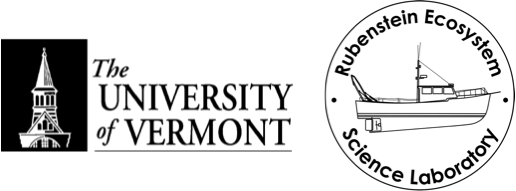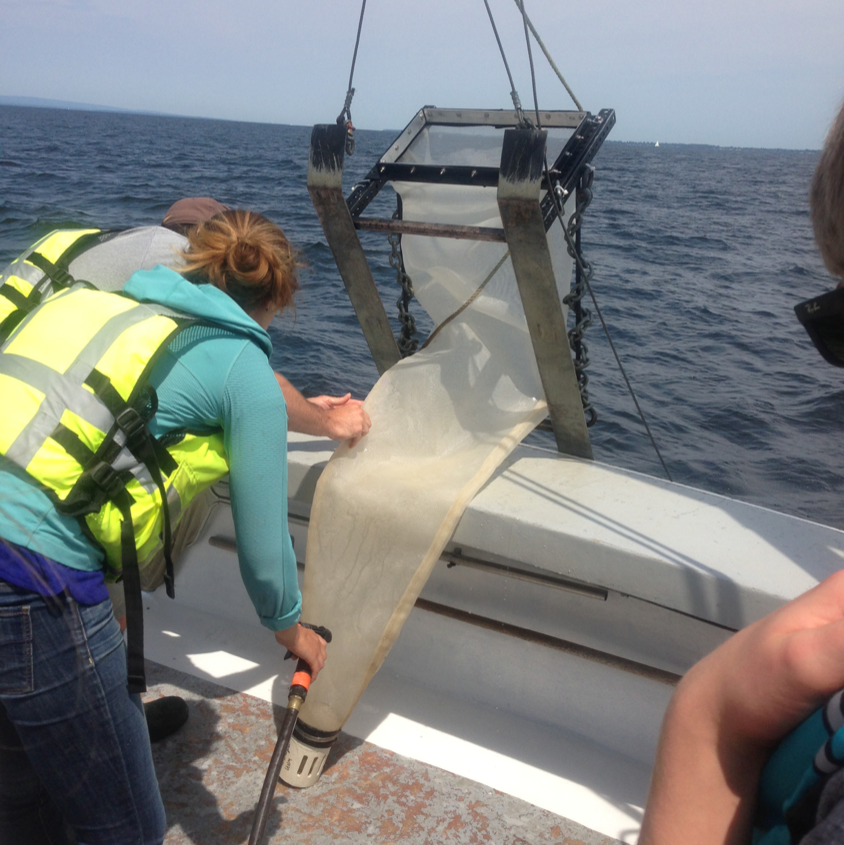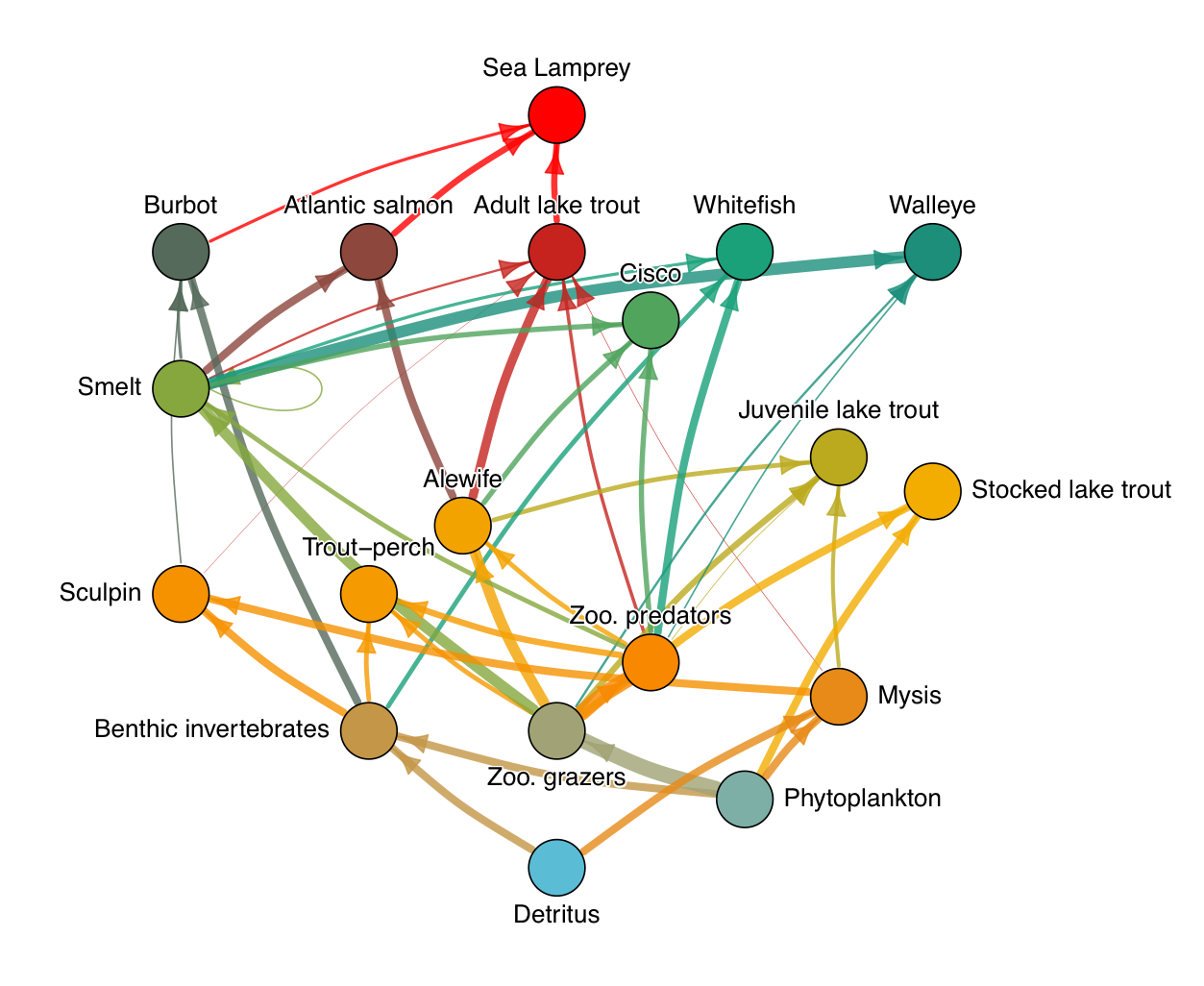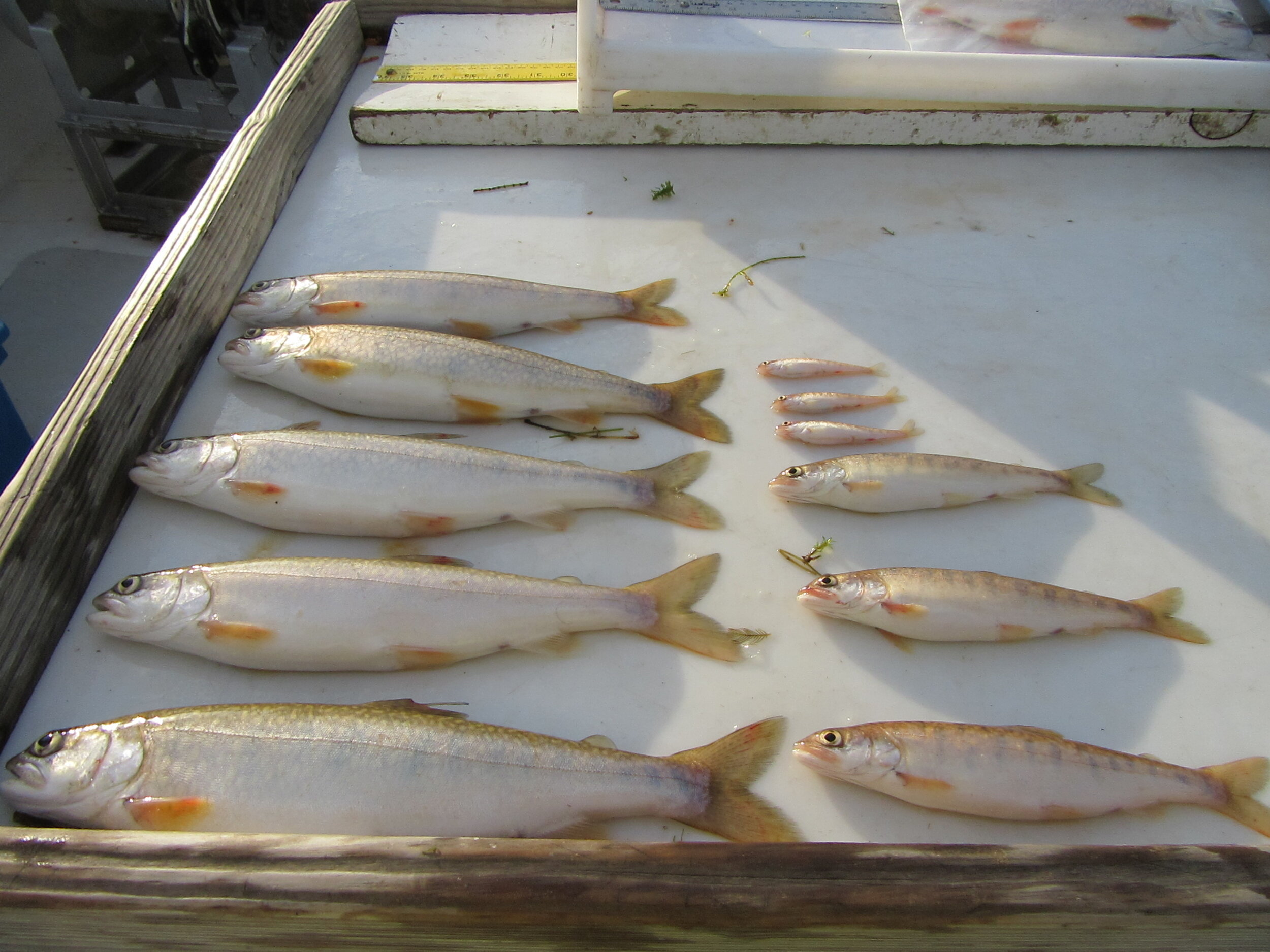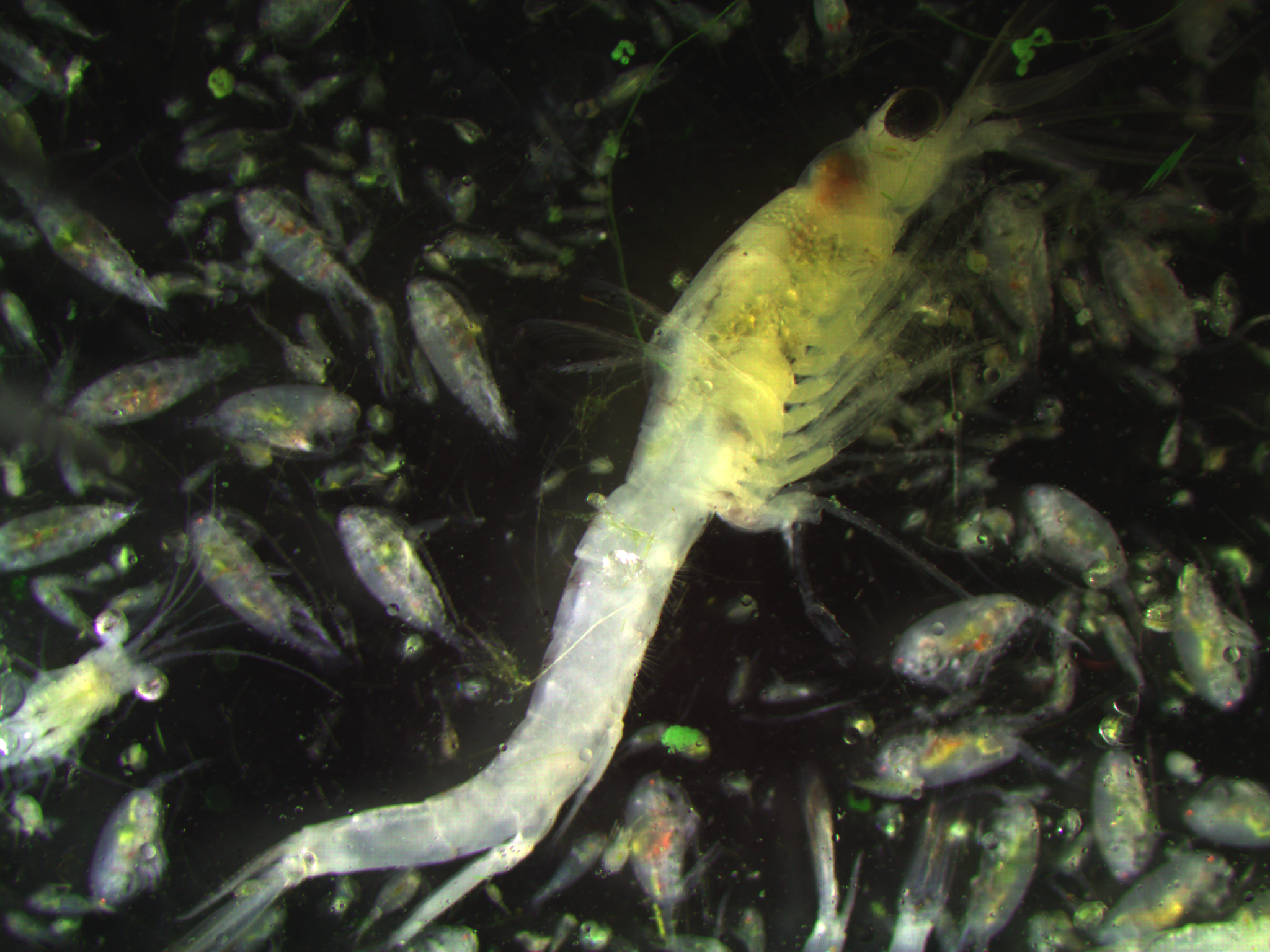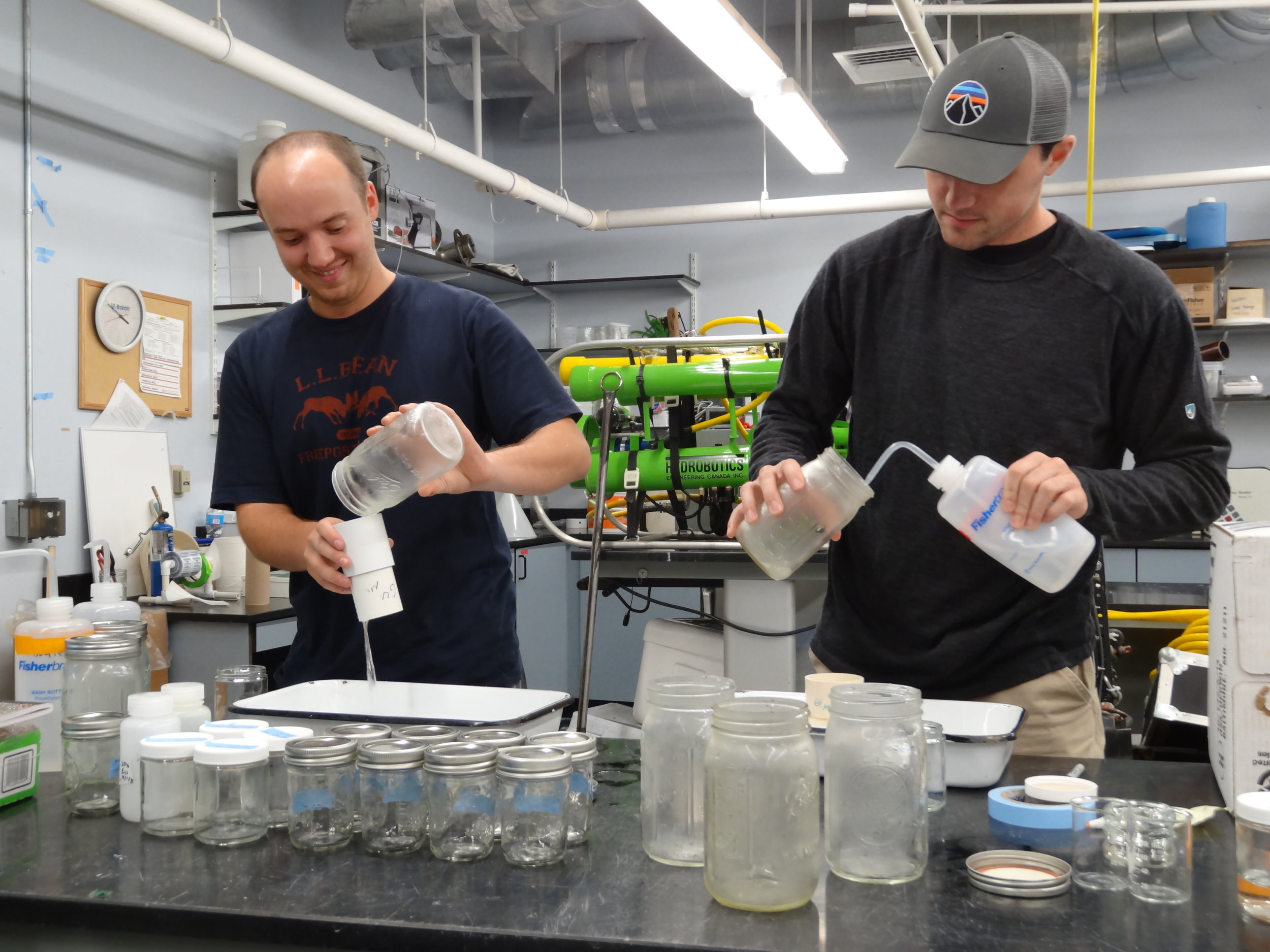






Projects
Projects
At the Stockwell Lab, we work on topics that have both local and global implications.
Read on to learn about our current major research areas.

Lake Champlain Food Web
Lake Champlain Food Web
Lake Champlain has experienced a number of ecological “events” over the last few decades. Zebra mussels invaded in 1993, white perch in 1984, alewife in 2003, the spiny water flea in 2014, and the fishhook water flea in 2018. In the 2010s, wild lake trout recruitment suddenly “turned on” after more than four decades of stocking with no evidence of wild-produced recruits. Natural reproduction, coupled with continued stocking, may result in a top-heavy food web with lake trout exerting high predatory pressure on rainbow smelt and alewife. A looming invasion by the quagga mussel may reduce pelagic primary production in Lake Champlain, short-circuiting bottom-up energy pathways. Such reduced primary production would negatively impact zooplankton and reduce prey availability for forage fishes such as rainbow smelt and alewife. Consequently, the middle of the food web may be squeezed from above (lake trout) and below (quagga mussels). We are using field research and modeling and to map the current Lake Champlain open-water food web to evaluate how past and future ecological events and management decisions have influenced and are likely to drive food web dynamics in Lake Champlain. Central questions revolve around the sources of carbon (pelagic or benthic) that support rainbow smelt and alewife populations, how the interplay of wild lake trout reproduction and stocking practices will influence fish community dynamics, and how an invasion of quagga mussels could alter Lake Champlain ecosystem structure and function.

Cyanobacteria & Food Webs
Cyanobacteria & Food Webs
Cyanobacteria blooms have negative impacts on humans, and climate change is expected to exacerbate blooms. For instance, cyanobacteria are the aquatic equivalent of junk food, and are hypothesized to short circuit ecosystems by interfering with energy transfer from primary producers to upper levels of food webs. They can also produce toxins linked to liver cancer and are hypothesized to be associated with neurodegenerative diseases such as ALS. Our research examines the extent to which cyanobacteria blooms can be detrimental to the health of food webs, in particular fish, and ultimately to humans who eat the fish.

Implications of Climate Change on Large Lakes
Implications of Climate Change on Large Lakes
A growing body of evidence suggests that the Earth’s climate is changing in a significant way. How large-lake ecosystems respond to climate change is a growing area of concern because of the many services these systems provide. We are using a combination of lab experiments, field sampling, and modeling to explore how environmental variability and climate change are likely to influence recruitment bottlenecks within cold-water fish populations, such as cisco, in the Great Lakes. Cisco and other related Coregonid species worldwide have experienced population declines due to fishing pressure and environmental changes that appear to have reduced recruitment. Understanding how organisms will adapt to climate change is critical for management agencies to maintain diverse, abundant, and healthy populations of native species.
Mysis Ecology
Mysis Ecology
Mysids are a group of omnivorous “shrimp-like” invertebrates found in freshwater and marine environments. They exhibit diel vertical migration and play a critical role in food webs because they link benthic and pelagic habitats and communities. We study the behavior, ecology, and population structure of this important species using traditional and cutting-edge techniques including an autonomous video camera system, fatty acids, and stable isotopes. A central focus of our research is to evaluate individual variability in migration, or in other words – why do some migrate vertically while others do not.

Winter Limnology
Winter Limnology
As precipitation patterns are altered and temperatures increase with climate change, temperate lakes may experience decreased snow cover and subsequent increased light penetration, as well as decreased ice cover. These changes may lead to higher inoculum concentrations of some phytoplankton groups (e.g. cyanobacteria) as they emerge from winter, potentially leading to higher magnitude or frequency of harmful algal blooms later in the year. We use a combination of lab work, field experiments, and quantitative methods to explore these hypotheses related to how winter severity influences plankton communities throughout the year.

Storm Impacts on Lakes
Storm Impacts on Lakes
Storms can physically alter lake environments and thus are capable of altering primary producers, including the development of toxic cyanobacterial blooms and other lake processes that depend upon phytoplankton communities. The effects of storms, however, may be context dependent based on local features such as lake size and morphometry, productivity and watershed area. Because storm intensities and frequencies are expected to increase under climate change , how lakes respond to such disturbances is a growing area of concern - aquatic ecosystems are increasingly recognized for the services they provide, such as public and environmental health, recreation, and industry. We are working with an international team to examine the potential for storms to alter phytoplankton diversity and composition across a gradient of lake types, and explore the potential impact of these changes on ecosystem functions.
